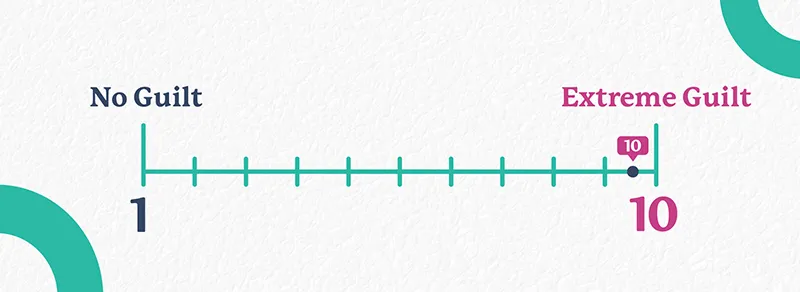How to Manage Guilt: Understanding and Overcoming Negative Emotions
Guilt is a universal human emotion, yet it’s often misunderstood and mismanaged. Research shows that people spend approximately five hours a week feeling guilty—roughly 5% of their waking hours. While guilt serves a purpose, excessive or misplaced guilt can harm our mental health and well-being. Here’s how you can better understand and manage this emotion.
What Is Guilt?
Guilt arises when we feel responsible for violating personal or universal standards of behaviour. It may stem from actual actions, perceived wrongdoings, or even thoughts. To understand guilt fully, consider these four key criteria:
- Emotional and Cognitive Basis: Guilt can manifest as an emotional reaction or a thought-driven experience.
- Accuracy: It doesn’t have to be based on truth; guilt can occur even when there’s no valid reason for it.
- Violation of Standards: Guilt often results from breaking personal rules or widely accepted norms.
- Sense of Responsibility: Feeling accountable for an action or situation, even if it’s not entirely justified.
Why Do We Feel Guilty?
A 2007 study by Dr. David M. Amodio and colleagues highlighted the brain’s response to guilt using EEG technology. The findings suggest guilt prompts two reactions:
- Withdrawal: An initial desire to avoid discomfort.
- Re-engagement: A drive to rectify the situation and make amends.
These findings support two common theories: guilt serves to evaluate oneself and to repair the harm caused.

Why Managing Guilt Matters
While guilt acts as a signal, prolonged guilt can become harmful. Negative emotions like guilt are linked to depression, as shown in a 2006 study involving Swedish twins. Spending too much time immersed in guilt can increase the risk of mental health issues.
Tip: Try rating the intensity of your guilt from 0 -10
5 Steps to Manage Guilt
1. Identify the Source of Guilt
Start by understanding when and why you feel guilty. Keeping a thought record can help track your emotions, thoughts, and triggers. This is particularly helpful for people prone to “guilt-proneness,” a condition characterized by:
- Feeling bad even when no harm is done.
- Guilt over mere thoughts of wrongdoing.
- Persistent feelings of guilt without any wrongdoing.
2. Ask: What's Fair?
Step back and evaluate the situation objectively. Ask yourself how you would judge someone else in your position. For instance, if you snapped at a child after a stressful day, would you consider this an unforgivable mistake in someone else? Likely not.
3. Test Your Thoughts
Put your guilt on trial by examining the evidence. Is there substantial proof you should feel guilty? If the answer is no, acknowledge the false signal and move on.
4. Address the Cause
If guilt is justified, take steps to make amends. This could range from a simple apology for a minor oversight to a more comprehensive effort for serious matters. A six-step framework for effective apologies includes:
- Expressing regret.
- Explaining what went wrong.
- Acknowledging responsibility.
- Declaring repentance.
- Offering to repair the damage.
- Requesting forgiveness.
5. Practice Letting Go
If guilt lingers without purpose, try temporarily releasing it. Rate the intensity of your guilt on a scale of 1–10 and allow yourself to reduce it. Even small steps, like moving from an 8 to a 5, can make a significant difference.
5 Steps to Cope With Guilt
Guilt is a natural emotion, but it’s essential to manage it effectively to protect your mental health. Whether it’s about forgiving yourself, making amends, or learning to let go, these steps can help you navigate guilt in a healthier way. If you’re experiencing challenges implementing these steps, please contact us.